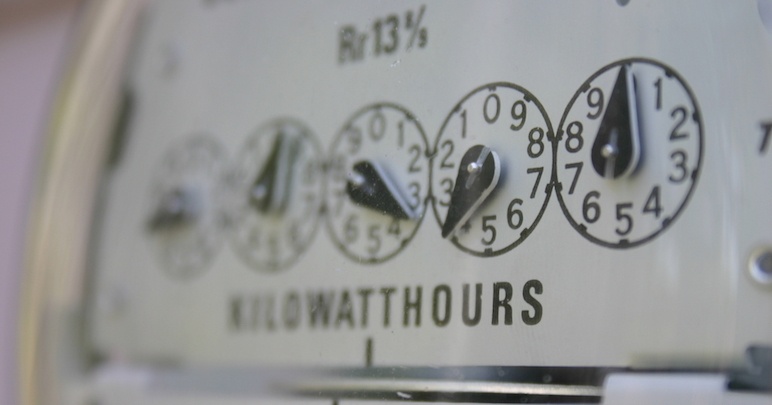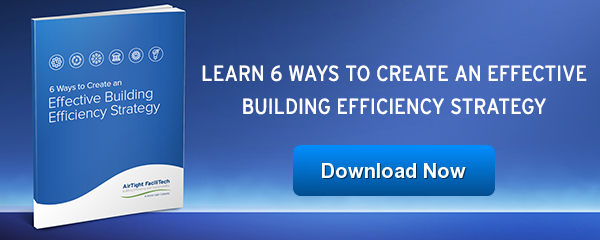3 Ways to Optimize Energy Usage For Your Charlotte Data Center HVAC
The average data center uses the same amount of energy as about 100 office buildings of equivalent size. With that kind of impact on the bottom line, it makes sense that energy efficiency is a high priority for most companies. Data centers house the network servers and other digital infrastructure that support billions of online interactions and store information that’s become vital to day-to-day life across the globe.

Downtime is simply not an option for these mission critical sites, and it’s not strategically viable to consider scaling them back. Existing data centers must grow continually to meet ever rising demand, and new facilities are being built at an incredible rate all over the world.
The need for data center energy efficiency
- Modern life requires data centers
- Environmental concerns are also a priority
- Businesses also need to cater to the bottom line
This is the reality of modern life: digital technology is constantly evolving and the hyper-connected web of computers, mobile devices, Smart buildings, and cloud services touches every aspect of our lives. As a result, the demand for quality data centers is not going to slow down.
At the same time, there’s an ongoing need for companies and individuals alike to shrink their environmental impact and help support conservation efforts. The tremendous amount of energy used by data center facilities puts an undeniable strain on the energy producers, many of whom are still burning coal to create that power.
Finally, any business hoping to compete long-term is in a constant struggle to balance production and innovation with cost cutting and streamlining in order to maximize profits. Since the energy usage of data centers is such a high line item on the operational budget, it’s an obvious target for whatever cost control the company can exert.
By optimizing a data center for energy efficiency, companies have experienced cost savings in the hundreds of thousands of dollars annually, not to mention the ecological benefit that comes from reducing energy usage that much. Focusing on energy optimization for data centers is a smart strategy that can allow companies to meet ongoing demand without causing undue damage to the environment or allowing costs to snowball out of control.
How the HVAC system affects data center energy efficiency
Since the HVAC system tends to be one of the greatest energy consumers in any commercial facility, it makes a logical point of focus when considering data center efficiency.
The way an HVAC system is designed and laid out — the type, size, and configuration of stacks, power supplies, and cables; the way ventilation and cooling is installed, and even the direction of the vents — can have a huge impact on how energy efficient the system ends up being.
In the following section, we’ll discuss some best practices for the installation, maintenance, and upgrading of HVAC equipment for data centers, focused on the three main areas:
- Air management
- Air-side economizer
- Efficient control systems
Air management
Setting up a strict hot aisle/cold aisle configuration for air exchange within the server and storage stacks is key for energy efficient data center air management.
While every facility has its own unique design requirements and challenges, this configuration of server racks should be attainable with the right planning and execution. In its simplest form, a hot aisle/cold aisle configuration requires arranging servers on their racks (and racks in relation to each other) so that heat exhaust vents all blow into the same central aisle and cooling fans all draw from a separate aisle. The aisles remain isolated from each other so the air doesn’t mix, and exhaust fans are strategically placed to collect and expel the hot air efficiently. At the same time, air conditioning output vents are placed to ensure that the equipment has continual access to cool air.
This is a deceptively simple but powerfully effective method of boosting energy efficiency in a data center environment, even doubling the cooling capacity of the data center’s entire HVAC system. According to Pacific Gas and Electric Company (PG&E), this one common-sense efficiency practice “can reduce data center cooling costs by over 60% (when combined with an air-side economizer.)”
Although strategic air management should be low-hanging fruit for any new construction, many older data centers that have grown organically over time have at least sections of the building where heat exhaust routinely mixes with cooled air. This situation threatens to harm the equipment and forces the cooling system to work much harder to maintain the appropriate temperature range.
Interestingly, effective air management has a second positive impact on energy efficiency as well. The laws of thermodynamics and physical properties of the air demand that the higher the difference between supply air and return air temperatures, the greater the space’s maximum load density. In other words, if cooled air and warmer exhaust are kept separate, the system can handle a larger volume of both while maintaining an optimal temperature. So, with the proper rack arrangement and air management in place, the facility can sustain optimal conditions using smaller HVAC equipment, further lowering operating costs.
Air-side economizer
Installing an air-side economizer is another valuable way to dramatically improve the energy efficiency of a data center without sacrificing optimal performance.
This valuable component provides an efficient method of moving between artificially cooled air and naturally cool air from outside the building using a thermostat-controlled switch. If and when the outside air reaches a temperature cool enough to do the job, the economizer switches over and the servers are cooled at a fraction of the energy usage.
Of course, in a data center, the air also needs to be effectively filtered and kept balanced as far as humidity, but switching to outdoor air for cooling rather than artificially cooling the air internally results in a tremendous energy savings.
Efficient control systems
To augment the power of the previous two best practices for energy-efficient data centers, a third beneficial option is the addition of modern digital control systems.This combination of hardware and software amplifies the cost savings by automating many of the processes we’ve already discussed and offering other opportunities for fine tuning the system.
For example, an automated control system may distinguish a localized and temporary rise in temperature from a need affecting an entire floor or building. The control system can then use variable speed fans and zone cooling to limit its response to the area that needs it, without wasting energy by over-cooling spaces that don’t need it.
Going beyond the minute-to-minute operation of the system, the latest digital controls allow for in-depth analysis of energy usage data, both in real time and historically, which allows for additional improvements based on a bigger picture understanding of the entire system’s performance.
These three best practices are just a sampling of what’s possible when it comes to optimizing the energy usage of a data center. Here at AirTight FaciliTech, we’d love the opportunity to discuss any data center HVAC needs your Charlotte area building may have and help you determine where improvements can be made.

